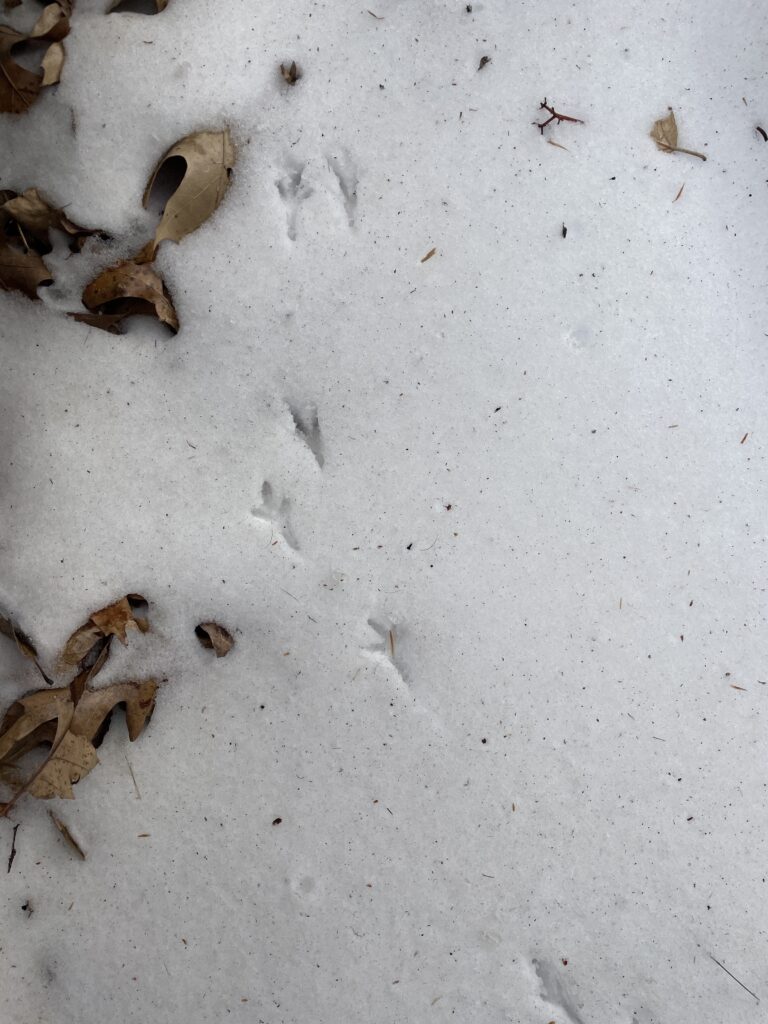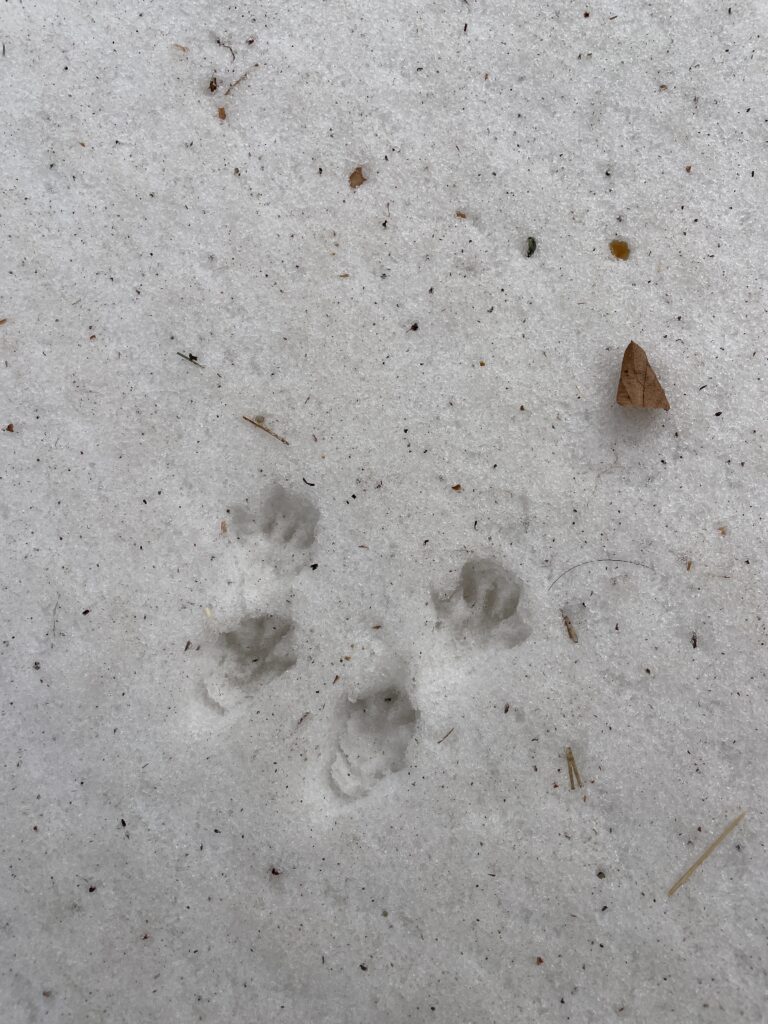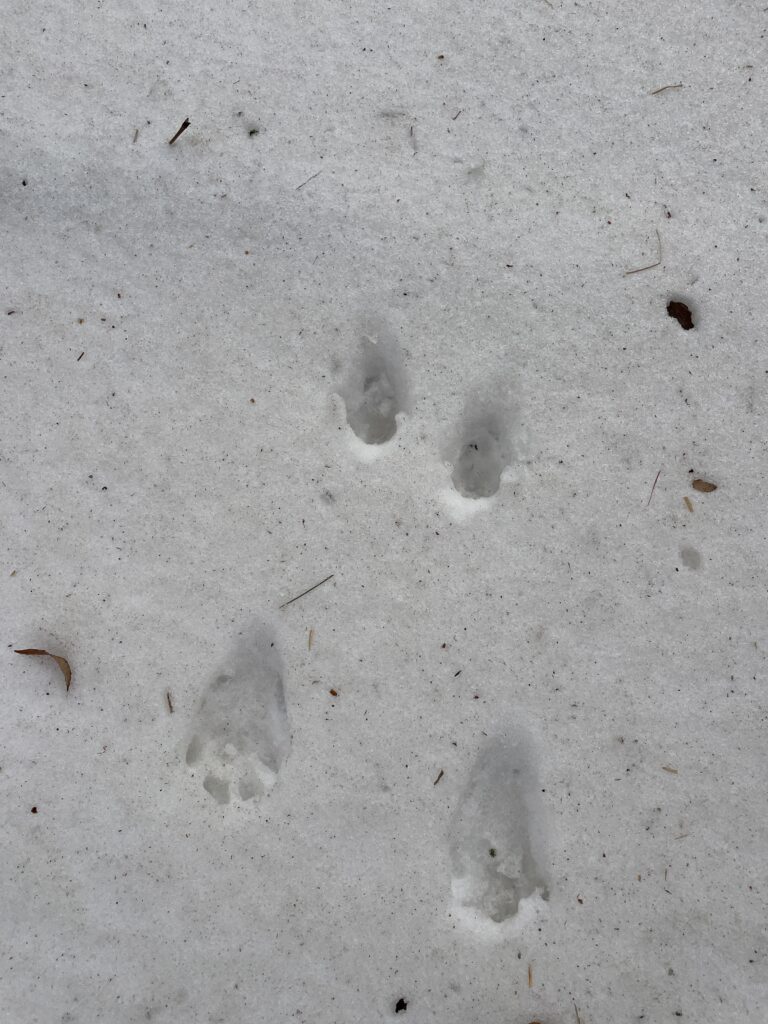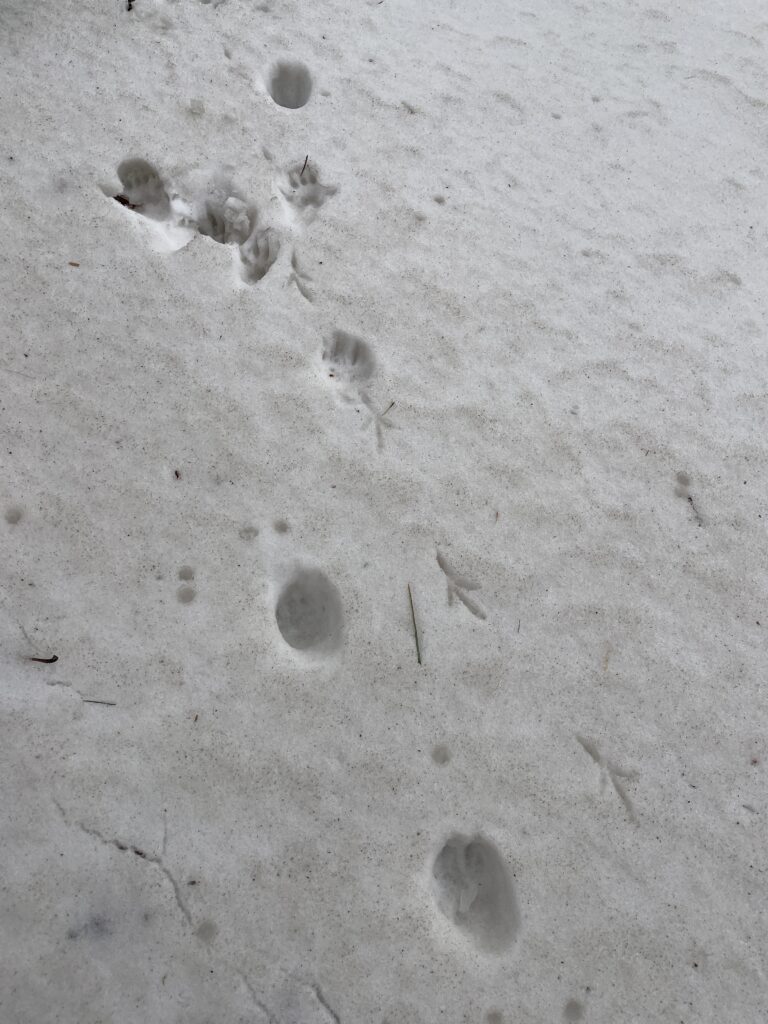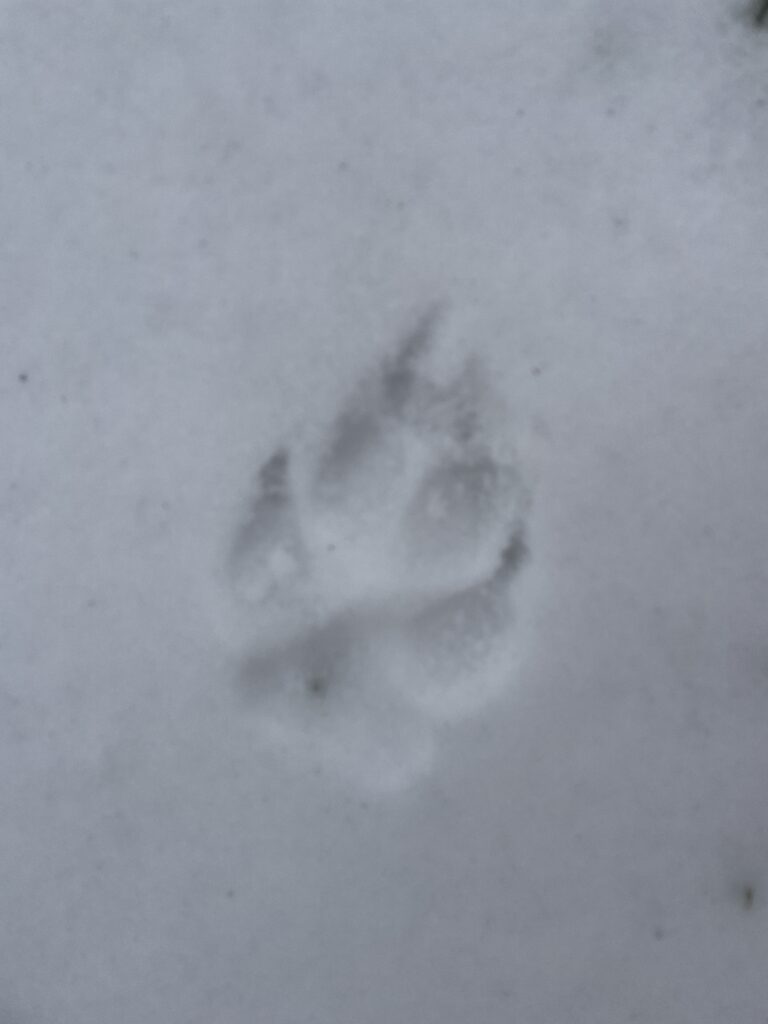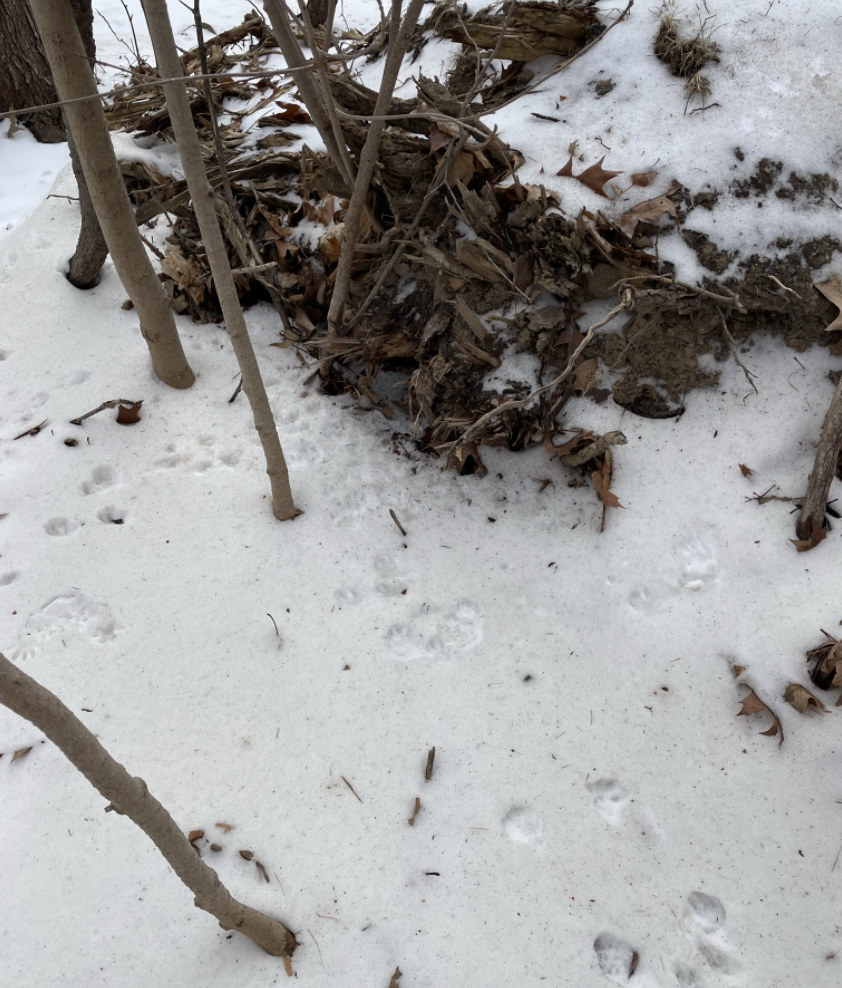Today, a few friends and I went on a walk around campus to look for animal tracks and other signs of winter wildlife in Burlington. We started by Patrick Gym and made our way towards a wooded area by the Burlington Country Club and golf course.
At first we were a little worried about finding tracks, since it snowed on Saturday night and turned a little icy in the days that followed. However, immediately after stepping off the main trail we saw a ton of tiny tracks in the snow. The compacted snow/ice had actually made it really easy to see paw prints, like the snow had made a perfect mold for every step the animals took.
The first ones we noticed were squirrel tracks, closely followed by some sort of bird tracks.
We continued looking around and found a lot more tracks! Unfortunately, they all seemed to be squirrel and bird tracks like the ones we saw earlier. Some of the squirrel tracks caught our attention however, due to the size differences between them. Some were smaller and others were larger, so originally we assumed they might be from different ages of squirrels. However, squirrels typically give birth around this time of year or later, so it wouldn’t make a lot of sense for the smaller tracks to be coming from young squirrels.
Many of the tracks led to and from a fallen tree, with many holes and indents made in the ground. This area could serve as shelter or a den for some animals, which would make sense as to why there was so much activity around it.
At one point a few Black Capped Chickadees perched on a tree a few yards away from me, so I assumed that a good amount of the bird tracks we had seen had come from them. Unfortunately there weren’t many distinguishing features in the tracks that I picked up on, so I wasn’t completely sure that the Chickadees made them.
Another interesting track we noticed was something that walked diagonally, but unfortunately the snow was too deep to get a good look at the paw print. It seemed a little too small to be a fox, so we guessed it might have been made by a house cat. Being by a golf course and many residential buildings, this guess made sense.
We also stepped onto the golf course very briefly, and found some domestic dog prints. I’ve seen a lot of people walking their dogs in this area before, so seeing dog tracks was not surprising.
Another notable part of this lab was using iNaturalist, which brought some difficulties. I uploaded observations while I was out finding them, but just to my own profile since I hadn’t joined the NR 2 page yet. When I tried moving these observations to the group page later, I couldn’t fully figure out how to do it. I realized some of them weren’t moving because I had just classified them as “Squirrels” so identifying them as “Eastern Gray Squirrel” let me add the tracks to the project. I did the same with my general identification of bird tracks as “Perching Birds,” and changed them to “Black Capped Chickadee,” since I had seen them in the area.
I enjoyed seeing my classmate’s observations on iNaturalist, and I also enjoyed how you could leave suggestions for identifications. It seems super helpful as a beginner when it comes to species identification, since more experienced people can reach out and suggest other ideas.
